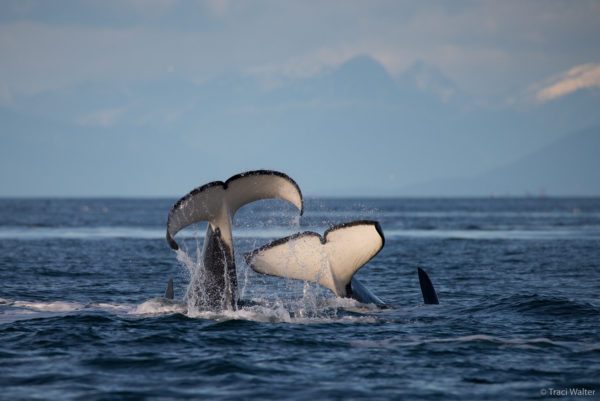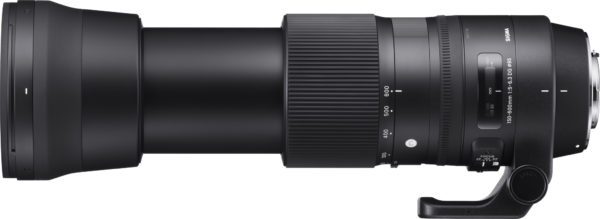Using the Sigma 150-600mm F5-6.3 lens, Traci Walter is living her dream photographing Orcas while working as a whale watch naturalist. Residing on San Juan Island in Washington State (a killer whale hotspot), Traci runs about two whale watch trips daily, where she teaches tourists about the beauty of these incredible animals.
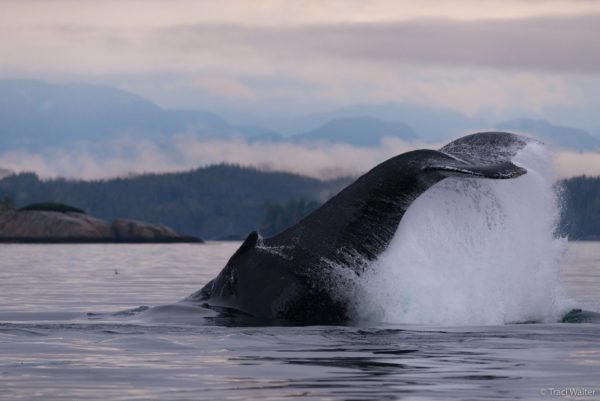
Where it all began
Wildlife played a huge role in Traci’s life beginning at a young age. Though she grew up in a city, Traci spent a great deal of time in the Northwoods of Wisconsin; the place where her passion for wildlife sparked. She recalls exploring, constantly looking for animals, and returning home to tell her family about what she had seen that day.
At 13 years old, Traci received her first camera from her grandfather. This small gesture enabled Traci to photograph the magnificent wildlife as she saw it, which only made her passion grow.
Though captivated by all sorts of wildlife, Traci’s interest specifically lied in Killer whales. She remembers this beginning when she was about 7 years old. “It became an obsession,” she claims. “Since there was no Killer whale presence in Wisconsin, I was learning all that I could about them without actually seeing them.” About 17 years later, she received an offer for a position as a Whale Watch Naturalist on San Juan Island in Washington State. She was finally given the chance to have the in person experience she had been missing out on.
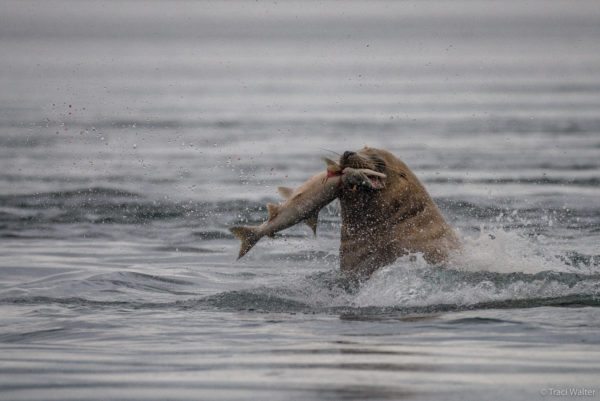
Education and Experience
In between her days of exploring Northwood Wisconsin and moving out to Washington, Traci got her degree in biology at the University of Wisconsin in Stevens Point. There, she worked as a temporary field biologist in several different positions, and volunteered at a Big Cat Sanctuary and a Raptor Rehabilitation Center. Through her volunteer work at animal shelters, Traci took photos of the animals in hopes of boosting successful adoptions. She also photographed animals found in a wildlife group she was a part of, and even took photos of abused animals for court cases. No matter where she was, Traci found a way to bring her camera into each experience she had. She notes, “Wildlife was my primary passion, and photography became secondhand. My experiences allowed me to combine the two pretty naturally.”
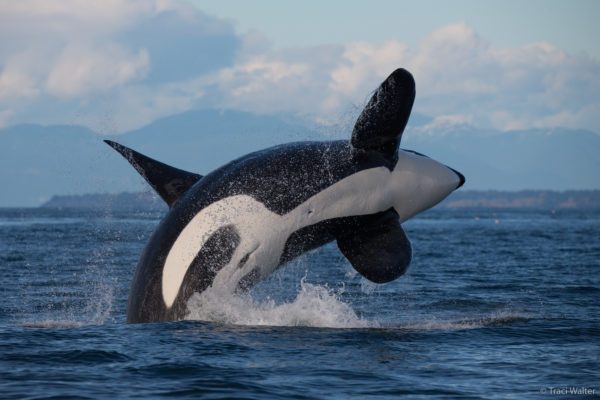
Today – Living her Dream
Once settled on San Juan Island, Traci got on a boat and began searching for the Killer whale she had always hoped of seeing. “Patience is key,” she told me. “It took me about 2 weeks to see my first Orca, but I remember it so clearly. Very emotional, very cold day. I just remember staring at them, tears dripped all down my face. This whole place just captured me.” Ever since then, Traci has been leading whale watching trips for different groups of people.
Today, she works for Western Prince Whale & Wildlife Tours, which consists of just two boats and about a dozen crew members. Though the company is small, Traci says people are traveling from all over the world to experience their tours. “Lots of travelers, whale enthusiasts, kids, scientists – it’s a very broad range.” Every trip is different and brings different challenges. She says that there are “so many variables on a tour,” that’s what keeps things fun and interesting.
Traci does her best to take photos during tours in addition to going out on her own. It is a priority of hers to answer the questions of guests on tour, however she loves sending images out to them specifically from their trip. “It makes me so happy to see their faces light up when I tell them I will be sending them images from their tour.”
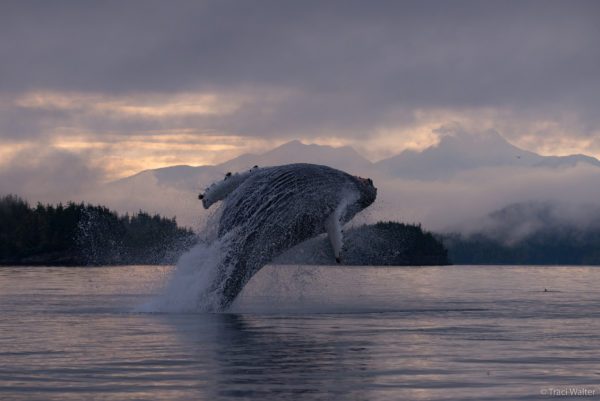
Sigma’s Impact
Traci began using the Sigma 150-600mm F5-6.3 lens about a year and a half ago. “I have so much love for this lens,” she claims. Traci had changed bodies and lenses several times, but given the wildlife space regulations in Washington State, she was looking for something longer range. “Shooting from distance is essential for what I do, but I didn’t want to compromise the quality of my photos just because I shoot further away.” Once the 150-600mm was announced, Traci did extensive research and when she purchased it, claimed it was “well worth the wait.” “It was everything I was looking for – it is an exceedingly fast lens that absolutely blew my mind.”
Shooting a great deal on water, Traci needed a lens with top notch stabilization. “These whales are popping up at random focal lengths and you often have no warning. You need a lens that will keep up with that and this lens does that remarkably.” She is blown away the stabilization and insists that the 150-600mm lens “is everything I was looking for.”
After switching to Sigma, fans of Traci immediately noticed the change in quality of her photos. “I started getting messages from people, asking about the lens, and insisting that they needed it. I can think of at least 8-10 people who have bought the lens because of the quality of my photos.”
Traci has seen a phenomenal change occur since switching to Sigma lenses and is extremely happy with the results.
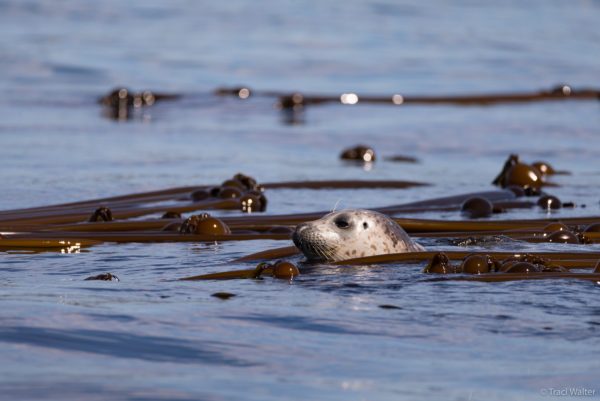
Advice for Fans
Again Traci insists that “Patience is key. Nailing the perfect shot will not come quickly.”
“Practice makes perfect – Shoot kids or fast moving objects before shooting whales.”
“Practice your stance. Keep your legs apart and knees bent and get yourself into the habit of keeping yourself stable.”
Don’t be afraid to zoom out. “It’s not always about a close up of a whale, zoom out to capture the whale in it’s environment as a whole.”
Take advantage of burst mode. “In today’s digital world, it has made it easier to shoot a series of images rapidly as whales are fast moving critters and each frame in a series can be quite different allowing you to increase your odds on an image you like.”
Change your settings based on light! “Many times if the light is changing constantly, I will put it on matrix light metering (sometimes I use center, rarely use spot), auto iso, and then adjust the exposure compensation down to -0.7, or even -1.0 to get it where I like it. Sometimes I will lock in my iso around ISO 400-800 if the light is being consistent and then pick my shutter speed.” Traci acknowledges that shooting whales can be extremely situational with regard to light and behavior so suggests that ” If they are traveling and going slow, you can have a slower shutter speed. If you have whales flying out of the air in high pursuit of a porpoise or a breaching whale, I sometimes want the fastest shutter speed my camera will go! (1/4000).”
Personal favorite aperture: “How I generally shoot is keeping my aperture at 7.1, particularly because I feel like the sigma 150-600 is the most sharp at this aperture, then I adjust my shutter speed and ISO around that consistent aperture.”
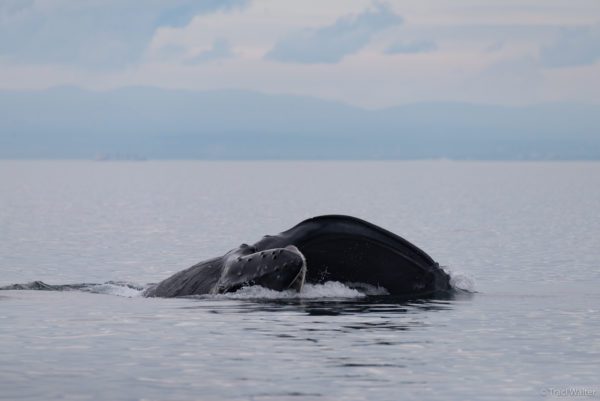
Goals for Guests
Traci mentions, “our goal is to show people the wide diversity of wildlife that exists around San Juan Island.” Guests on the boat will grow to fall in love with the animals they see and Traci hopes this will motivate them to help the animals. “There are lots of ecological problems here that we want to open people’s eyes to.” Traci swears that every small change can add up and create a true and lasting positive change. Increasing the awareness of common pesticides, encouraging guests to check their cars for leaks, and pushing for the switch to biodegradable soaps are just a few of changes that Traci hopes to accomplish on her tours.
A combination of top notch equipment and an immense amount of talent allows Traci to capture absolutely stunning photos. For more information on Traci and the work she does, visit her website. Click here for more information on the 150-600mm lens.
